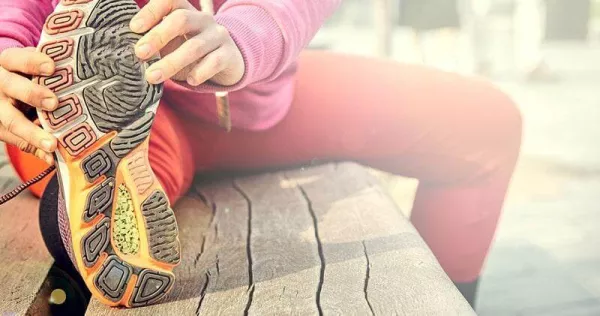5 Exercises for Lower Back Pain Relief



In order for our bodies to function properly, without issues or without pain, we need to ensure we are exercising consistently and properly. For our backs in particular, exercise that strengthens the muscles in the surrounding areas will go a long way in preventing or reducing back pain. Keeping the muscles that support our spine strong will help to reduce these issues. Even exercises that don’t involve any equipment will work effectively. You will be able to do exercises for lower back pain from your home, at your convenience in order to keep your back, and its surrounding muscles strong and stabilized.
Exercises for Lower Back Pain
Specific muscle groups to focus on when thinking about back pain and back issues are your hamstrings, glutes, hips, and abdominal muscles, among others. These areas of our bodies help to stabilize our back. By keeping them strong and stable, you can help to better support your spine and lower back, reducing the chance of injury and general pain in those areas. In the following, we will discuss specific exercises to help with these muscle groups and maintain the strength in your back.
Hamstring Stretches
Hamstring stretches are great for increasing mobility in your legs and in turn, stabilizing your lower back. By consistently stretching your hamstrings, you will be lengthening the muscles, reducing tension in the area and, as a result, reducing lower back stress. An effective hamstring stretch is performed while lying down on your back. While on your back, take a towel and loop it around the bottom of your foot. While straightening your knee, slowly pull the towel towards your chest until you start to feel a gentle stretch in your hamstrings. Hold this stretch for between 15-30 seconds, repeating 2-4 times for each leg.
Glute Bridge/Bridge Exercise
Our glutes are hugely important in supporting our lower back, stabilizing our spine, and strengthening our posture in general. If our glutes become weak, other areas of your body will try to compensate for the lack of support. By putting too much stress on your hamstrings and hips, it will affect your lower back and create more pain in the area.
The Glute Bridge exercise is a good option for strengthening your glutes. To perform, start by lying on the floor, face up with your arms at your sides, knees bent, and keeping your feet and heels flat on the floor. Lift your hips off of the ground until your knees, hips, and shoulders are in a straight line. Really engage your glute muscles during this process to ensure you are working this area of your body. Hold this position for 1-2 seconds and slowly return to the floor, but making sure to only slightly touch before completing another rep. You can add an exercise band to go above your knees in order to force your muscles to engage the way they are meant to throughout this exercise.
Bird Dog
This exercise for lower back pain is great for relieving high pressure stress on your spine and discs. Specifically, the exercise works your lower back muscles, hips, glutes and hamstrings. To perform the Bird Dog, begin on all fours keeping your hands directly below your shoulders and your knees under your hips. Reach your right arm forward and your left leg back, keeping them parallel to the floor. Really push through your left heel during this stage of the exercise to engage the muscles in the back of your leg. Avoid swaying your hips in either direction and sagging your chest towards the floor. Slowly return to the starting position and repeat with the opposite arm and leg. For each rep, you should hold the stretch for 10 seconds before returning to your starting position and perform 5-10 reps.
While performing the exercise, focusing on engaging your abdominal muscles will help with your lower back strength and support. You will begin to notice you can hold the position longer over time.
Hyperextensions
Hyperextensions work by strengthening you lower back muscles, specifically by increasing flexibility in the area. This increased flexibility will reduce the risk of injury by better supporting and stabilizing your spine while eliminating stress within your lower back. They are a great option for recovering from lower back pain issues. If you are performing this without any equipment, using an exercise/stability ball will do the trick. Begin by putting the soles of your feet up against the wall, while remaining on your knees. Keeping the stability ball in front of you, lay on the ball and begin to roll out until your legs are straight and your feet remain on the wall. Keeping your feet shoulder width apart will allow you to have more stability throughout the exercise. Next, reach your hands behind your head and begin to raise your chest up off of the ball, hold for a brief moment and slowly return your chest to the ball. Focus on engaging your lower back muscles to perform this lift.
Exercises and activities to avoid
Not all exercises and stretches are good for our backs. There are some things you should avoid when trying to strengthen your supporting muscles. For example, performing a standing, touch-toe stretch can actually put more stress and strain on your back. In particular, your discs and ligaments within your spine will feel the stress from this stretch. They also tend to overstretch areas like your hamstrings and lower back muscles, creating more harm than good. Classic sit-ups are another common exercise people perform that actually put excess pressure on the discs in your spine. Instead try partial crunches, which strengthen your core and back muscles. The smaller movements in this exercise prevent too much stress being put on your lower back and spine.
Pinnacle Pain and Spine
At Pinnacle Pain and Spine, we take pride in helping you find the proper exercises for lower back pain and developing treatment plans such as physical therapy or spinal injections to help reduce your back pain. Consider contacting our team to discuss your specific symptoms and experiences so that we can help you to get back to living well and eliminating your back pain.